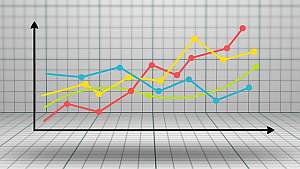Moving Average Forecast Calculator
Instructions: You can use this Moving Average Forecast Calculator for a given times series data set, by providing a set of data and the number of periods to compute the average for (For example, for a 3-month Moving Averages, the number of periods to use is 3). Also, you can indicate if the data periods are months or not, and you optionally can write your own custom names for the time periods in the form below:
Moving Average Calculator
More about the Moving Average Forecasts so you can get a better understanding of the outcome that will be provided by this solver. The idea behind Moving Averages for making forecasts consists of estimating the data value of certain period based on the average values for the dataset in the previous month.
For example, if we are computing 3-month Moving Averages (MA), we would use the following formula to estimate the data value during period \(n\)
\[ \text{Forecast during period n} = \hat Y_n = \displaystyle \frac{Y_{n-3} + Y_{n-2} + Y_{n-1}}{3}\]
How to Calculate Moving Averages
(1) First, you need to have a sample data, numerical data from a process you want to forecast. Typically, it will be a time series, in nature.
(2) Then, you will place this data in a spreadsheet like the one provided above, ordering in chronological ascending order
(3) Standing at the time period right after the last one for which you have data, you compute the average of values from a fixed number of periods before the one you are currently at. Then you do the same for each time period before that, making sure you have enough points before to do the average. This number of periods used for the averages actually define the process of the MA.
(4) For example, when you fix 3 periods to compute the average, you are computing a three month moving averages, or 3-MA.
Other forecasting technique
The Moving Averages (MA) method of forecasting is one of the easiest and most common methods to make forecasts based on a times series data set. Other common methods are the naive forecast method , the weighted moving averages , the exponential smoothing forecast method , and the linear trend forecasting method, just to mention a few.



